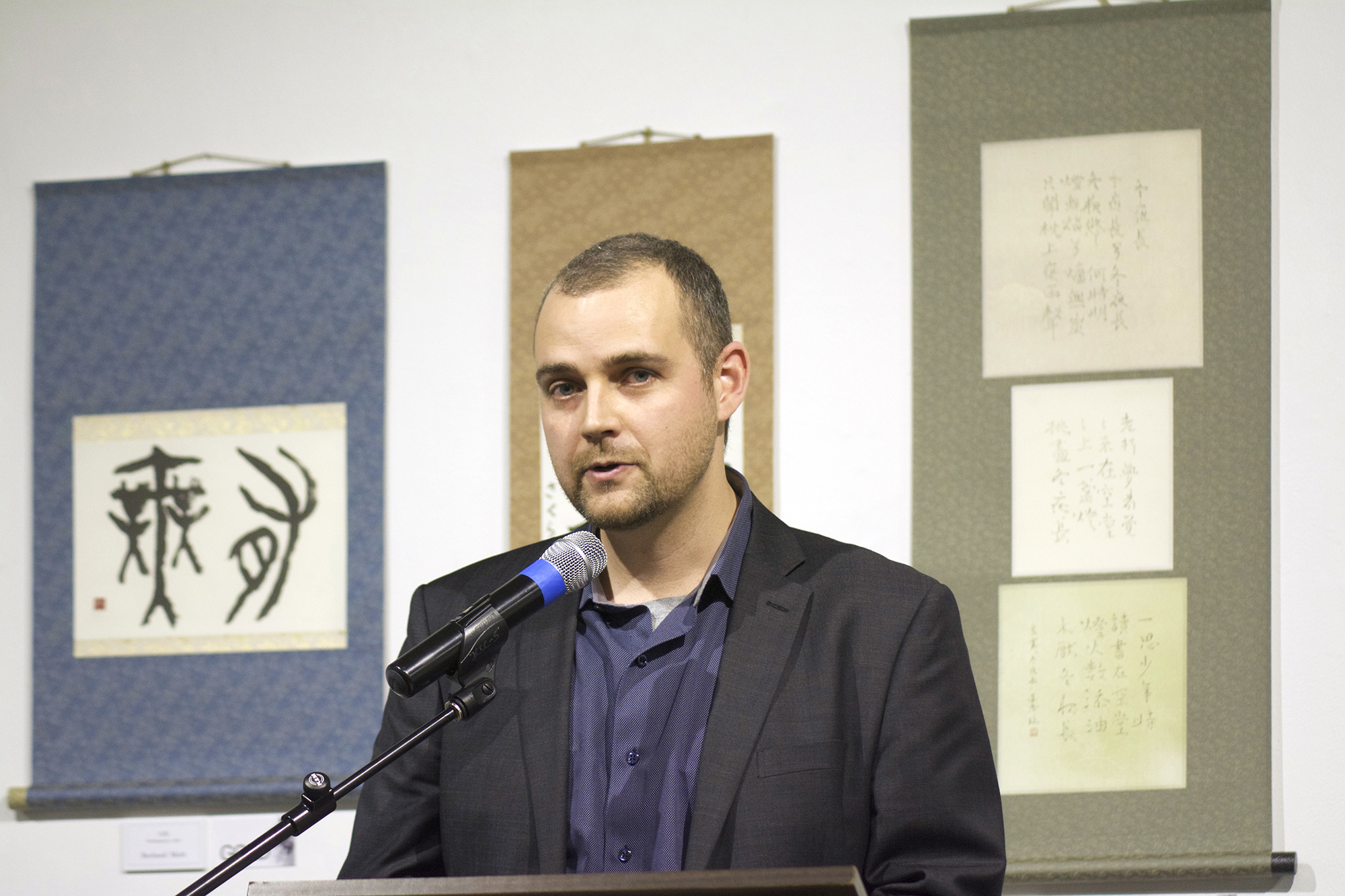Keynote Speech
Each year Shodo Canada selects a student of Shodo Canada to kick off the exhibition and speak on behalf of the community about the insights and lessons learned through the practice of calligraphy.
2025 - Dawn Maruno
In class, I struggled to manage the shodo brush, and still do. My friends ask me why I persist when it seems that I’m really struggling. I tell them that I am learning so much in class - not just calligraphy technique, but how to see - how to look at line, texture, balance and especially space, or as Maeda-Sensei describes it, emptiness. These lessons have changed the way that I look at the world, in particular at art, decor, landscapes.
2024 - Ichiyo Nagata
At my starting point of Shodo, Maeda Sensei shared these words with me: Protecting, Breaking, Departing守破離. This is a Japanese learning philosophy on the three stages of mastering art. I practice the same lines over and over in order to invent a single disciplined line that can project the sound of life. Many practice papers are scattered on the floor and my cat lies on the papers for a nap. Any feelings of anguish disappear in the silence of the room. I look forward to practicing here to discover more of Japanese culture, boundless imagination and beautiful moments.
2023 - Masoud Jelokhani-Niaraki
This Shodo" class is a different place, a different land from the land we live in. It has its own people, rules, language, customs and habits, and culture. The class has no visible dimensions. The only limit there is determined by brush lines on the paper, and these lines are confined and free at the same ;me; sometimes they can escape the paper and dissipate in space and ;me and imagination. In this class we have an invisible spirit connectng us together, encouraging us to delve into the essence hidden behind the appearance of forms created by brush lines. In this class we like each other, we encourage each other, and we learn from each other. Mostly without saying a word. When I am in this class I merge with this connecting hidden spirit and transform without much effort into a traveller in a colourful land, carrying a brush dipped in ink in my hand wandering in the hidden mysteries of the dark meadows of a paper.
2022 - Kentaro Nakamura
Shodo as an art form inherently reflects components of Japanese culture, and how by practicing shodo I can engage in fundamental aspects of Japanese culture in a deeper way. Ten years now I’ve been practicing shodo and I could not be more grateful for that. I still feel like I have so much more room to grow and improve. That aspect of calligraphy, that process of continual improvement and growth that will last me a lifetime is another reason why I practice shodo and why I love practicing it.
2021 - Sue Chen
Each class is distinct. Some are reserved, while others are chatty. Every group is a mixed bag of backgrounds, personalities, and affinities. Ages 5 to 85, novice or experienced, all are welcome. Sensei’s ability to create inclusive lesson plans is to be commended. Furthermore, when faced with lockdowns, she swiftly pivoted from in-person to digital teaching. With so much disruption and uncertainty, Shodo classes kept us connected.
2020 - Wolfgang Moeder
So, I just want to briefly talk about some of the positive effects that calligraphy has for me. I enjoy the slow preparation of the ink before we start and that already gets me in a meditative mode. Then the actual writing requires full attention. As a matter of fact, the meditative or Flow state of mind, where you completely concentrate on one thing and stop all the background chatter in your brain, has been shown to improve health and memory and overall well-being.
2019 - Louise Pauls
The flow that occurs in music is also in Japanese calligraphy and is one of the aspects that I love about it even though I am a beginner to it. The flow and movement of brush on paper, the flow of ink on paper and the flow of the characters themselves. Flow in art, as in life, is essential. In art the eyes are drawn left to right, and up and down by lines. Calligraphy has characters that do all of this in so many ways, and in so many historical styles.
2018 - Matt Borland
Without the brush, there would be no shodo. It’s the tool we use to translate ideas, emotions, history, experiences, language, neuron firings, muscle activations, and so much more, into the strokes, and empty spaces around the strokes, which we are surrounded by on the walls here today.
2017 - Boris Steipe
Calligraphy cannot be done without rhythm, without position and height of the brush, without understanding the meaning, without considering the ink, the paper – but in the end, none of that makes the writing, all of that needs to be forgotten in the actual instant of writing. Writing a character is a gesture in time that is taken out of time, governed only by the end of the paper.












